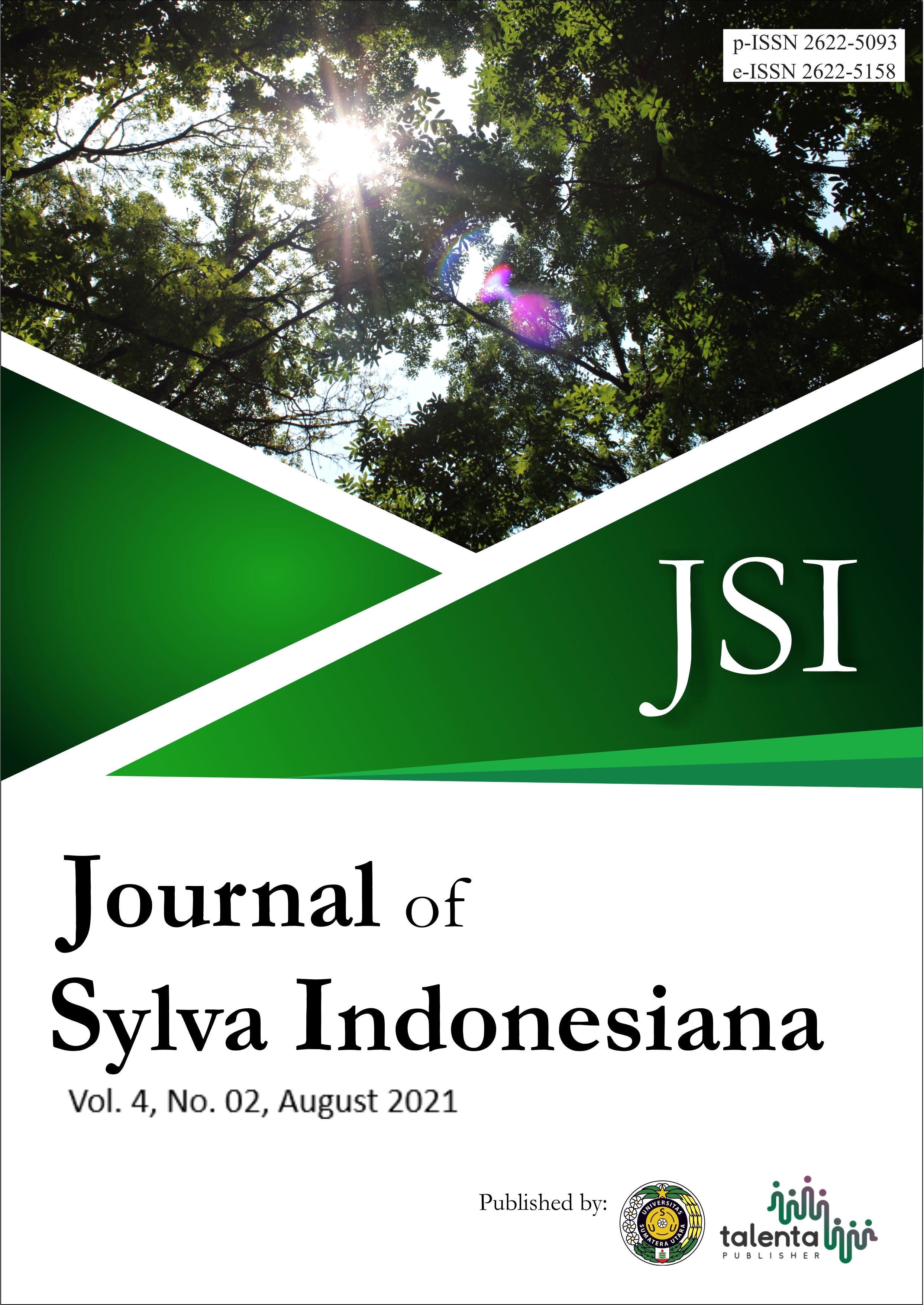Suitability of Teak Log Quality from Gunung Kidul and Bantul Yogyakarta Community Forest for Export Meubel Purpose
DOI:
https://doi.org/10.32734/jsi.v4i02.6347Keywords:
Brittleness Defects, Furniture Export, Sapwood Defects, Straightness Defects, Teak Community Forest, Wood Quality, Wood Knot DefectsAbstract
Natural defect or poor log quality are common in community teak forests. Furniture manufacturers typically use these log types for export purposes. The aim of this study is to determine the effect of community teak forest location and teak stand age affect on teak wood quality. Three teak forest locations were Bantul and two locations in Gunung Kidul. The teak stand age class namely 6, 8, and 10 years old. The data was analyzed using SPSS 20.0 with Tukey test. The result showed that brittleness defect, sapwood defect, and different wooden knot defects were significant in all locations, while log straightness defect was found only in Dlingo. Similarly, all teak stand age (6, 8, and 10 years old) also produced the same defects such as brittleness defect, sapwood defect, and wood knot defect, while the straightness defect at the age of 10 years old was different from to other two teak stand age (6 and 8-year-old). Average teak log defects were straightness defect 1.87-3.53%, brittleness defect 1.19–6.21%, sapwood defect 1.49-4.82 cm, and wood knot defect 5.10-11.46 cm. However, the teak log quality still met the SNI 7534.2-2010 and 7535.2-2010 as raw material for exporting furniture.
Downloads
Downloads
Published
How to Cite
Issue
Section
License

This work is licensed under a Creative Commons Attribution-NonCommercial 4.0 International License.



















